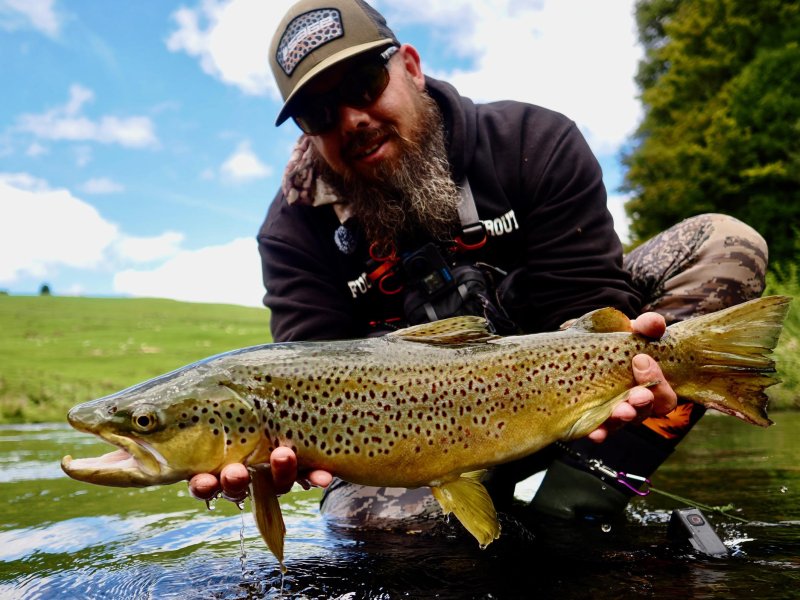| The Mangatutu is a very popular small river that offers excellent fishing in clear water for a good population of both brown and rainbow trout. Its easy access and very good stock numbers make this a popular fishery. |
| Fish type |
Both rainbow and brown trout averaging around 1 - 2kgs. A survey by Fish and Game in 2009 found that the river supported nearly 100 fish per kilometre with the majority being in the 20 - 40cm range though with about 20% of the stock being over 40cms in length. |
| Situation |
The Mangatutu rises in the Pureora Forest and is a large tributary of the Punui River (which in turn feeds into the Waipa River). It joins the Punui near Waikeria. |
| Maps |
Access map
|
| Check conditions |
View the MetService weather forecast.
View river level. |
| Description |
The Mangatutu is a popular stream that offers several kilometres of excellent fishing for a good population of reasonable sized fish in (usually) clear water. It receives considerable angling pressure however.
The upper reaches above the Leithbridge rd bridge is the most popular section as the river flows between clear banks and over a stone and gravel bed. Fish can be spotted in the clear water and the river is easily waded. Banks allow easy casting and the river is an attractive mixture of riffles, runs and pools. Some bank side vegetation along its length provide good fish cover.
Below the Leithbridge Rd bridge the river receives less pressure from anglers but still provides excellent water. |
| Access |
Mostly access is across private farmland however and so permission must be sought from the landowner to access the best water. |
| Methods |
Above the Leithbridge Rd bridge it is fly fishing only while spin fishing is permitted downstream from the bridge. That said, all this water is ideal for dry fly or nymphing. |
| Recommended tackle |
Rods in the 4-5 weight are best for the upper section while rods up to weight 6 are suitable in the lower stretch of this river. Long leaders are essential especially during the brighter warmer months when fish have become more spooky and water levels are lower. |
| Recommended lures |
Dry flies: Early in the season try Parachute Adams or other representations of a hatching may fly and from November, Green beetles and from mid summer, cicada
patterns. Like most rivers however, observation is important to see what is landing on, or emerging from the water and then trying to represent it with a similar fly pattern.
Nymphs: Small lightly weighted or unweighted Pheasant Tail, Pheasant Tail emerger, Prince Nymphs, Halfbacks and Hare and Coppers in sizes 14 to 18.
Wet flies: Very small soft hackled (wee wets) wet flies fished just subsurface especially during the evening rise can be very effective on warm evenings when fish are active on sedge (caddis).
Spinners: Small bladed spinners preferably in red and gold patterns such as a Veltic fished through the pools or upstream into the faster water can be effective during the day when other methods fail.
|
| Tributaries |
There are no tributaries of interest to the angler |
|
Regulations
(1)Applicable toMangatutu below (downstream)
from Lethbridge RdRegionAuckland/Waikato
regulations SeasonOct 1-Jun
30MethodsArtificial fly, spinnerBag limit5Size limit (cm)30cm minimumRegulations (2)Applicable toMangatutu above (upstream) from
Lethbridge RdRegionAuckland/Waikato
regulations SeasonOct 1-Jun
30MethodsArtificial fly onlyBag limit5Size limit (cm)30cm minimum



